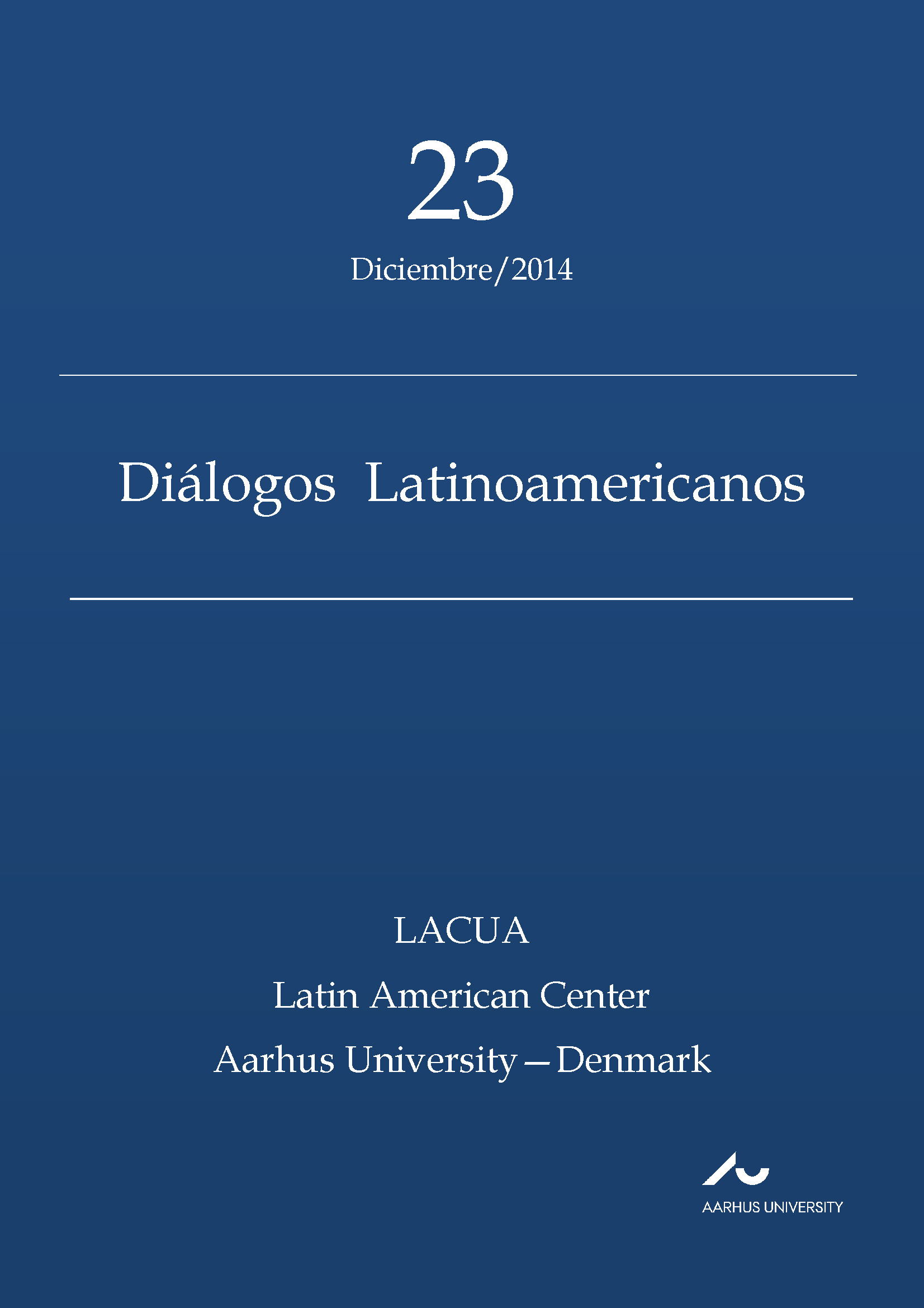La expresión musical como vehículo de transformación y cambio socio-político y cómo los nuevos medios han pasado a ser los principales agentes de su difusión: el caso de Calle 13
DOI:
https://doi.org/10.7146/dl.v15i23.113122Keywords:
Calle 13, urban music, social criticism, new mediaAbstract
From their origin almost ten years ago, the Puerto Rican urban music group, Calle 13,
composed by Rene Perez Joglar (Residente) and his half-brother, Eduardo Cabra Martinez
(Visitante) has been characterized by a peculiar musical style that is hard to classify into
one genre- for it fuses African, Caribbean, and Latin rhythms all in one. This musical
proposal has led the group to win a total of nineteen Latin Grammy prizes, and two
Grammys- breaking the world record of these awards. However, one more important aspect
that characterizes this group is the message they send across to their public. Calle 13´s
lyrics are well known for their strong tone of social criticism and irreverence that has
caused them to be censored in many Latin American countries, while at the same time their
songs have also provoked positive social changes in other nations. The purpose of this
research is to analyze how this group has used social media to disseminate their message. In
this context, musical expression becomes an agent or vehicle of transformation and social
and political change for the public. Moreover, new media becomes indispensable in the
speeding up of immediate production. “The content of their lyrics holds the purpose of
criticizing and questioning social conditioning, repression against certain subjects, the
affirmation of identity, and the establishment of rebellion as a generating mechanism of
autonomy and resistance of social beings against attempts of domination that stem from
conservative sectors of the population” (Pinedas: 2012).
In this paper we will take into account the theory of cultural studies and aesthetics
formulated by Andrea Huyssen, which supports central ideas regarding modernism, avantgardism,
mass culture and postmodernism. Modernism was originated from a conscious
strategy of exclusion, an anguish to become contaminated by a consumerist and oppressive
mass culture, and in this context, Calle 13 serves as an example of this formulation. Finally,
in this paper we will also analyze the function of media spectacle, the roles assigned by
media, and the demands of immediacy of our times. The virtual world we know is enriched
by socially constructed messages which are disseminated by new media and the socially
charged messages of groups like Calle 13 are nurtured by the immediacy in the
transmission and reception of these messages.
References
de:
(http://www.mercuriovalpo.cl/prontus4_noticias/site/artic/20110223/pags/2011
0223182617.html).
Alarcón Perea, M. (2011). “Calle 13 en casa: Nos vamos para Haití con Kcho”.
Revista Cuba. Debate. Recuperado (marzo de 2013), de:
(http://www.cubadebate.cu/noticias/2010/03/23/calle-13-en-casa-nos-vamospara-
haiti-con-kcho/).
Azkintuwe, (2011). “Grupo Calle 13 transforma “Fuerza Mapuche” en fenómeno
Twitter a escala global”. Recuperado (febrero de 2013), de:
(http://www.theclinic.cl/2011/02/24/calle-13-transforma-fuerza-mapuche-enfenomeno-
twitter-a-escala-global/).
Leal, C. (2011). “Calle 13 revoluciona a la Quinta Vergara derrochando
irreverencia, críticasocial y hasta chilenidad”. Recuperado (febrero de 2013),
de: (http://www.biobiochile.cl/2011/02/24/calle-13-sale-a-la-quinta-vergaraderrochando-
irreverencia-critica-social-y-hasta-chilenidad.shtml).
Palacios, S. (2013). “Estrellas en la red, René Pérez, de Calle 13, publica foto con
Chávez”. El Nuevo Herald. Recuperado (abril de 2013), de:
(http://www.elnuevoherald.com/2013/03/14/1431057/estrellas-en-la-red-reneperez.
html).
Peón Iñiguez, J. (2013). “Diez motivos para no escuchar Calle 13”. Revista
Replicante. Cultura crítica y periodismo digital. Recuperado (febrero de 2013),
de: (http://revistareplicante.com/diez-motivos-para-no-escuchar-calle-13/).
Pérez-Duthie, J.C. (2012). “Calle 13 brings its urban Latin sound and fiery politics
to L.A.” Los Angeles Times. Recuperado (febrero de 2013), de:
(http://articles.latimes.com/2012/may/12/entertainment/la-et-calle-13-
20120512).
Pineda G., E. (2012). “Calle 13: Irreverencia para la crítica social”. Recuperado
(febrero de 2013), de (http://estherpinedag.wordpress.com/2012/02/12/calle-13-
irreverencia-para-la-critica-social/).
Redacción 180 (2012). “Obama no me representa”. Revista 180. Recuperado (abril
de 2013), de: (http://www.180.com.uy/articulo/25821_Obama-no-merepresenta).
Santamaría, J. (2012). “Cautiva Calle 13 con su crítica social”. Agencia Reforma.
Recuperado (febrero de 2013), de:
(http://www.elmanana.com.mx/notas.asp?id=312397).
Downloads
Published
How to Cite
Issue
Section
License
Counting from volume 31 (2022), articles published in Diálogos Latinoamericanos are licensed under CC-BY 4.0. Read more about the license terms here https://creativecommons.org/licenses/by/4.0/.
No Creative Commons license applied on volumes 1-30. All rights reserved by the authors. Readers may download, read, and link to the articles, but they cannot republish the articles.
With the publication of volume 31 (2022), authors retain the full copyright to their articles and give Diálogos Latinoamericanos the right to the first publication. Authors also retain copyright to earlier versions of manuscripts, such as the submitted (pre-print) and the accepted manuscript (post-print).
Copyright to articles published in volumes 1-30 is held by the authors.





